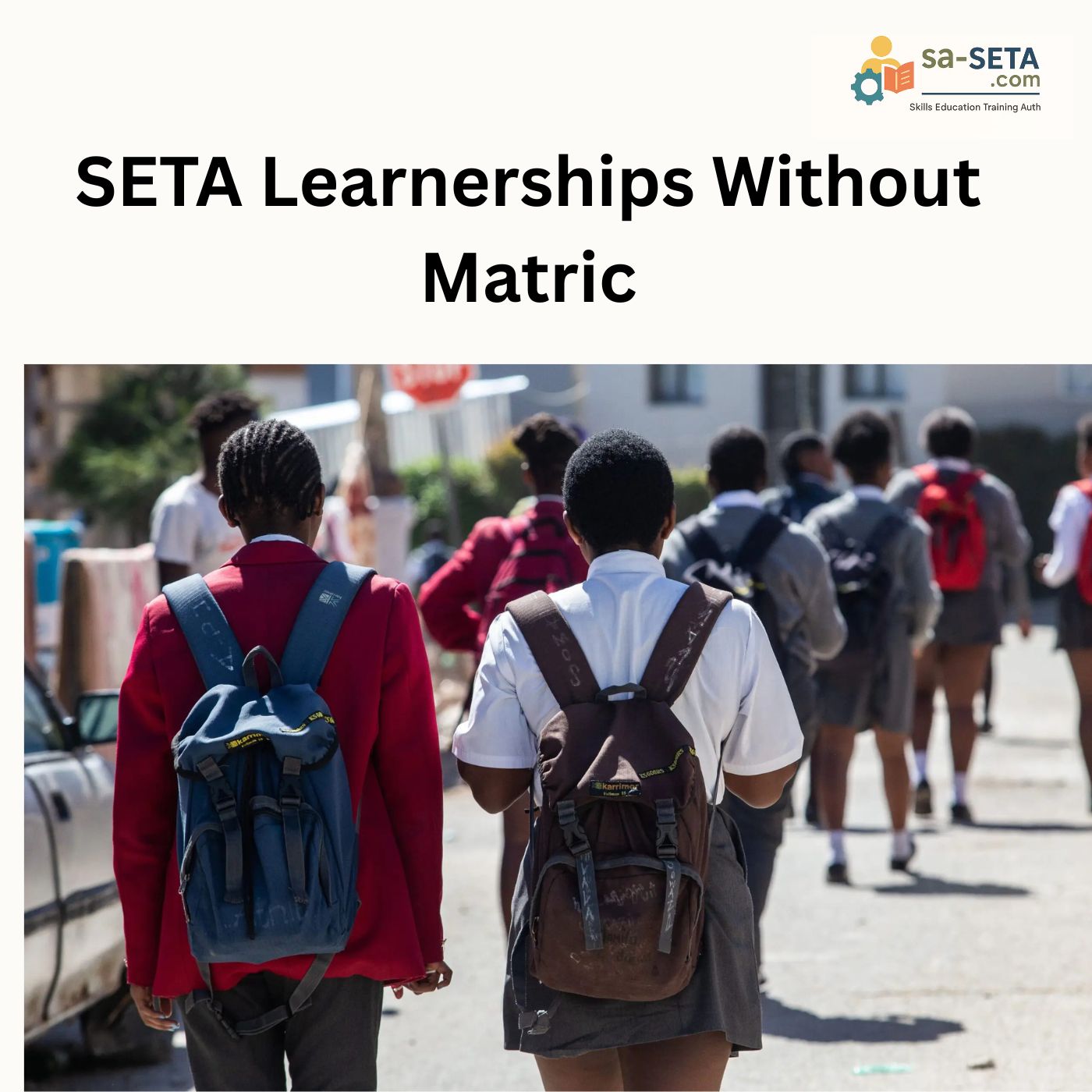You don’t need a matric certificate to start your career. Across South Africa, various SETAs (Sector Education & Training Authorities) offer learnerships that don’t require matric, enabling you to learn practical skills and earn a qualification while working.
This guide breaks down: what these opportunities involve, eligibility criteria, how to apply, and where to find them in 2025.
What Are SETA Learnerships?
A learnership is a formal training programme combining classroom learning and workplace experience, registered on the National Qualifications Framework (NQF). Successful completion leads to a nationally recognised qualification.
Learnerships are governed under the Skills Development Act, administered by SETAs in collaboration with employers and accredited training providers.
Can You Apply Without Matric?
Absolutely! Learnerships at NQF Levels 1–3 typically only require Grade 9 or equivalent, not matric. These are specifically designed to upskill individuals missing formal secondary education.
Popular sectors offering no-matric pathways include:
- Construction and Civil Engineering (bricklaying, plumbing, carpentry)
- Hospitality and Tourism (entry-level roles in hotels and restaurants)
- Manufacturing (factory assembly, production lines)
- Agriculture and Environmental Work (farming, animal care, conservation)
These programmes focus on practical skills over academic credentials, making them accessible to many eager learners.
Who Qualifies?
Eligibility typically includes:
- South African citizen or permanent resident
- Aged 16–35 (some exceptions apply)
- Grade 9 or NCV equivalent (for NQF 1–3 programmes). Grade 12 may be required for NQF 4–5
- Unemployed or not in full-time education (for govt-funded spaces)
- Commitment to full programme duration (usually 12–18 months)sa-seta.com
Benefits of No‑Matric Learnerships
- Earn while you learn: Monthly stipends typically range from R2,500 to R4,500, depending on sector and NQF level.saseta.org.za
- Hands-on experience: Work on real projects and gain practical industry exposure
- National qualification: Completion grants an NQF-aligned certificate respected across sectors
- Job opportunities: Many learners transition into permanent roles with their host employers
How to Find Opportunities
Where to Look:
- Official SETA websites (e.g., CETA, W&RSETA, AGRISETA)
- Job portals such as Careers24, Indeed, or SA Youth Learnership listings
- Training providers and employers listing learnerships (e.g., in manufacturing, hospitality)
Example Programmes:
| Sector | SETA/Focus | Eligibility Without Matric |
|---|---|---|
| Hospitality & Tourism | Services SETA | Grade 9–10 |
| Retail & Sales | W&RSETA | Grade 10 |
| Light Industrial Skills | MERSETA / CETA | Grade 9 / NCV Level 2 |
| Agricultural Training | AGRISETA | Grade 9 or NCV |
How to Apply Step‑by‑Step
- Identify the right programme based on sector and entry requirements
- Prepare documents:
- Certified ID copy
- Grade 9 or higher school certificate (if available)
- Proof of residence
- CV and motivational letter
- Submit application through SETA websites or training provider portals
- Check for assessments/interviews once shortlisted
- Sign the learnership contract with employer and provider once selected
Tips for Success
- Apply early and widely—spaces fill fast
- Use a concise, focused motivation letter explaining your interest in the skill
- Highlight strengths like reliability, eagerness to learn, and teamwork skills
- Follow up politely if you haven’t heard back in 30 days
- Be prepared for flexible work hours in sectors like hospitality or manufacturing
Real Voices: Reddit Examples
“It’s possible for someone with Grade 9 or N3 to access NQF 4–5 learnerships via RPL routes.”seta.com
“Trade-based careers like refrigeration and plumbing often don’t require matric.”
These stories reflect the opportunities still available—even without matric.
Challenges to Be Aware Of
- Learnership availability depends on employer buy-in—not always advertised formally
- Competition remains high, even for no-matric slots
- Some programmes still require NQF Level 4 or subject-specific skills
- Lesser stipends in low-skill sectors (e.g., agricultural vs. technical)
Final Thoughts
You don’t need matric to build skills or earn while gaining valuable workplace experience.
SETA learnerships without matric provide a pathway into sectors like hospitality, construction, agriculture, and retail. By starting at NQF 1–3, learners can later progress toward further education or higher-level learnerships.
Stay proactive, organized, and open to opportunities—you could start a meaningful career path in 2025 without needing Grade 12.

